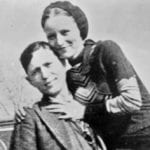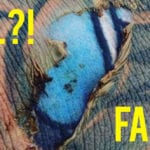 Weird Stuff
Weird Stuff  Weird Stuff
Weird Stuff  History
History 10 Legends Whose Last Moments Undid Their Glory
 Health
Health 10 Futuristic Ideas to Treat Common Medical Problems
 Weird Stuff
Weird Stuff Ten Surreal Attempts to Reverse Baldness
 Facts
Facts 10 U.S. Government Contingency Plans for the Unthinkable
 History
History 10 Weird Distractions from the Great Depression
 Movies and TV
Movies and TV 10 Fictional Kings Who Go from Good to Bad
 Food
Food The Fantastic Chemistry Behind Why 10 Popular Foods Taste So Good
 Technology
Technology 10 Futuristic Fungal Technologies
 History
History 10 Not-so-Spooky Events That Also Happened on October 31
 Weird Stuff
Weird Stuff 10 Things So Rare They’ve Only Been Found Once
 History
History 10 Legends Whose Last Moments Undid Their Glory
 Health
Health 10 Futuristic Ideas to Treat Common Medical Problems
Who's Behind Listverse?

Jamie Frater
Head Editor
Jamie founded Listverse due to an insatiable desire to share fascinating, obscure, and bizarre facts. He has been a guest speaker on numerous national radio and television stations and is a five time published author.
More About Us Weird Stuff
Weird Stuff Ten Surreal Attempts to Reverse Baldness
 Facts
Facts 10 U.S. Government Contingency Plans for the Unthinkable
 History
History 10 Weird Distractions from the Great Depression
 Movies and TV
Movies and TV 10 Fictional Kings Who Go from Good to Bad
 Food
Food The Fantastic Chemistry Behind Why 10 Popular Foods Taste So Good
 Technology
Technology 10 Futuristic Fungal Technologies
 History
History 10 Not-so-Spooky Events That Also Happened on October 31
10 More Little-Known Weird Mysteries
Some people or events in the world are inexplicable, enigmatic, or just plain weird—which is probably why we continued to find these subjects so fascinating. To go on with our theme of the unusual and occasionally macabre, we present another 10 strange unsolved mysteries for your mystification and delight.

In February 1936, the body of Giuseppe “Pepe” Veraldi was found under a bridge in Catanzaro, Italy. He had apparently jumped off the bridge, gashed his head open on the rocky riverbed thirty feet below, and drowned in shallow water. A police investigation pointed to suicide. His family disagreed, seeing no reason why Giuseppe might want to kill himself.
Three years later in January 1939, a teenager named Maria Talarico happened to walk near the bridge where Veraldi’s body was discovered. She collapsed unconscious and was taken home. When she woke, Maria spoke in a deeper, somewhat harsh voice that sounded male. The seemingly possessed young girl said her name was “Pepe.”
The spirit of Giuseppe Veraldi demanded to speak to his widowed mother. While waiting for Mrs. Catarina Veraldi, Maria asked for wine, cigarettes, and playing cards, inviting neighbors to join her in a game—very atypical behavior according to her own mother. She called some of the men present by the names of four of Giuseppe’s known friends.
When Mrs. Veraldi arrived at the Talarico home, she was amazed to hear her son’s voice coming from the teenage girl. “Pepe” said his friends had murdered him by tossing him off the bridge and beating him to death with an iron bar. As soon as she made the confession, Maria ran out of the house to the bridge and lay down in the exact position of Giuseppe’s body. An appalled Mrs. Veraldi insisted her son stop possessing Maria immediately. The girl awakened without any memory of the evening’s bizarre events.
Nine years later, Mrs. Veraldi received a letter from Luigi “Toto” Marchete, one of her son’s friends who had left Italy shortly after Giuseppe’s death. Luigi confessed he had killed Giuseppe in a jealous rage over a woman. Three other mutual friends—the men named by the possessed Maria—had helped him. The details in the letter were consistent with the story told by “Pepe.” Since one of the men had already died and Luigi was in Argentina, the other two accomplices were arrested by the police, tried for the murder, and sentenced to jail.
Maria didn’t know Giuseppe Veraldi, nor did any of her family, friends, or neighbors. How had she known the truth of his violent death? Some believe she was possessed by the spirit of the murdered man. The enigma has continued to baffle researchers.

In February 1885, John Lee went to the gallows at Exeter Gaol in England. He had been convicted of the murder of Emma Ann Whitehead Keyse at Babbacombe Bay, South Devon and sentenced to hang. Through an astonishing series of events, the condemned man was saved from judicial hanging and eventually became free.
Emma Keyse, a rich and elderly spinster, lived in “The Glen,” a family home she had inherited and occupied alone except for servants. John Lee, the cook’s half-brother, worked as a footman at the Glen prior to joining the Royal Navy, but after a medical discharge and subsequently serving 6 months in prison for theft from another employer, he returned to Babbacombe Bay to resume his old position at the Glen.
In November 1884, Emma Keyse was found dead following a house fire. She had suffered blunt force head trauma and her throat had been violently cut to the vertebrae. It was clear to investigators that the killer had set the fire in an attempt to cover up the crime. John Lee was suspected at once. He was the only male servant and he had an unexplained wound on his arm. Supposedly, his motive derived from a pay cut he’d been given for unsatisfactory work. The evidence was circumstantial, and John continued to protest his innocence. Nevertheless, a jury convicted him of murdering Emma Keyse.
When the time came, John Lee mounted the scaffold. The executioner adjusted the noose around his neck. But when the lever was pulled, the trapdoor failed to open. John waited while the executioner tested the mechanism, which seemed to work. For a second time, the rope was put around John’s neck. Again, the trapdoor didn’t open. The mechanism was tested by workmen and found in order, so a third attempt to hang John was made. For the final time, the trapdoor malfunctioned. John was taken back to his cell.
Later, his sentence was commuted to life in prison. He served 22 years and was released in 1907, already a legend as the “Man They Couldn’t Hang.” Divine intervention or simple mechanical failure and coincidence? We can only conjecture.

On Butler Street in Springfield, Massachusetts in January 1959, 80 year old Mrs. Charles Papineau and her 13 year old grandson, Wayne, were terrified when the house’s windows suddenly started shattering without an apparent cause. Both Mrs. Papineau and Wayne claimed to have heard odd thumping sounds just before windows were smashed to pieces. In a week, 39 windows were broken.
The glazier who installed replacement panes told a reporter that the glass had all fallen inside the house. It appeared the windows were broken from the outside, as if the perpetrator had struck the middle of the panes with violent force.
Despite a police investigation, no culprits or evidence of a crime were found. Enter John C. Parker, an amateur expert on poltergeists. Parker, also an architect, offered to perform a scientific investigation of the phenomenon. He hoped to prove temperature changes hadn’t been responsible by installing a thermometer in the bathroom, where three windows in total had been broken by the unseen force. He also planned to install a strong plastic window in that room to prevent any further breakages.
Apart from frightening the nervous Mrs. Papineau, who suffered windows exploding right in front of her, the most affected victim appeared to be the insurance agent asked to process her claim for $93 in replacement glass. Without a cause other than poltergeist to list on the damage claim form, he had to call his head office for instructions.
The window breakages ended a little less than a week after they began. The responsible party was never positively identified. Speculation continues among students of psychic phenomenon, but it’s worth noting Mrs. Papineau herself didn’t believe in ghosts, and the results of Parker’s independent investigation of the events aren’t known.
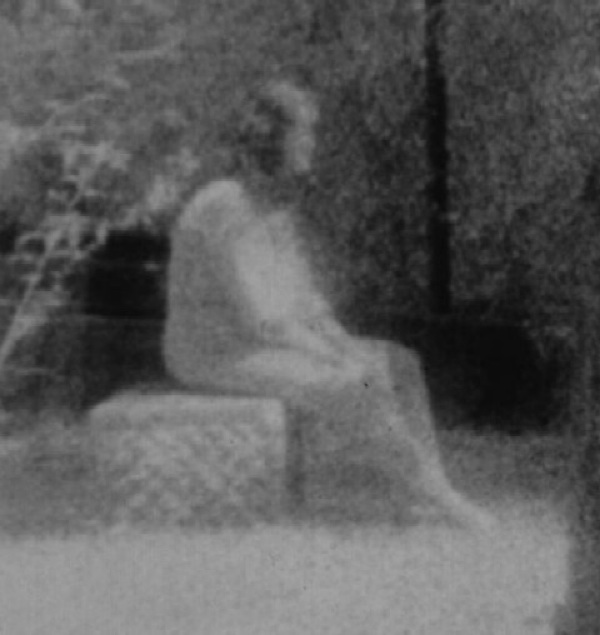
Every night at 7:30, Adeline Santos, 16, and her 13 year old brother, John, appeared to enter trance-like comas and claimed to communicate with spirits for 90 minutes to 3 hours at their family home in Santa Clara, California in 1925.
The spirit sessions began in early January, when Adeline said she was visited by a “Lady in White,” the ghost of her mother’s former employer who had died five years earlier in Hawaii, while John believed he was under the spell of an unidentified gray bearded man. It seems no one but the brother and sister actually saw any apparitions, but while in trances, both children spoke in voices other than their own that were assumed to belong to the spirits in question. Their séances caused a local sensation that soon spread.
Hearing about the phenomena, the primarily Portuguese community residents visited to determine the truth for themselves. The children’s parents were understandably alarmed when neighbors gathered at their home to dance in the belief the activity would drive the unwanted spirits away. Psychical researchers believed poltergeists were responsible. And a psychiatrist, though not admitted to the home at first, offered his theory that the apparent possession was caused by a religious frenzy or possible hysterical disorder.
After a week of regular trances and spiritual possession, both children were sent to spend the night at Mission Santa Clare de Asís by their parents in the hope that the priests might prove able to protect Adeline and John from their nightly visitors.
The mother held spiritualist beliefs and thought Adeline and John’s experiences genuine. The father wasn’t certain. We’ve been unable to determine what happened to the children or the Santos family after January 10, 1925. Whether Adeline and John faked their possessions or were genuine trance mediums remains unknown.
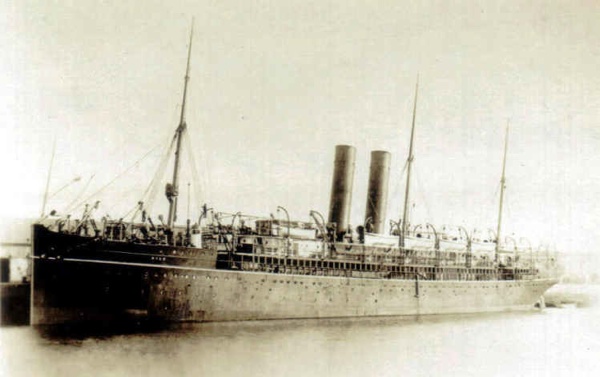
In March 1867, passengers and crew including Captain Reeks aboard the Royal Mail steamer Danube were startled to hear strange, baffling noises at sea while the ship was anchored near Greytown (also known as San Juan de Nicaragua) off the coast of Nicaragua in the Caribbean Sea. Similar noises were heard at other times by sailors aboard steamships in the same area. Captain Charles Dennehy of the Shannon was one who spoke about his experience in a letter to Nature magazine.
The phenomenon appeared to occur only in iron hulled vessels, not ships with wooden hulls and only at night, though not every night—heavy swells were seen to prevent the freakish occurrence. The noise was described as a loud, high pitched, metallic, monotonous vibration traveling through the ship’s metal hull. One witness likened the sound to an Aeolian harp and observed the iron plates resonating. The sound could last for several hours before suddenly ceasing. No one on shore reported hearing anything unusual.
Captain Dennehy said the sound had a distinct ¾ time signature like a waltz that turned his ship’s hull into a “great musical sounding board.” According to the unflappable captain, the source couldn’t be determined by listeners as it appeared to be everywhere outside the ship and could also be heard clearly in various places around the vessel.
Following letters posted in Nature and Field magazines by witnesses, speculation ranged from schools of Sciaenidae (a type of fish known for its “drumming”), sharks, alligators, turtles, manatees, currents changed by the silting in the harbor, sea quakes, gas escaping underwater, a previously undiscovered form of electricity, or even a new type of mesmerism. The riddle of the Grey Town noises may never be solved—we can find no mention of it after 1871—but weird noises at sea have been reported in other locations around the world right up to modern times.
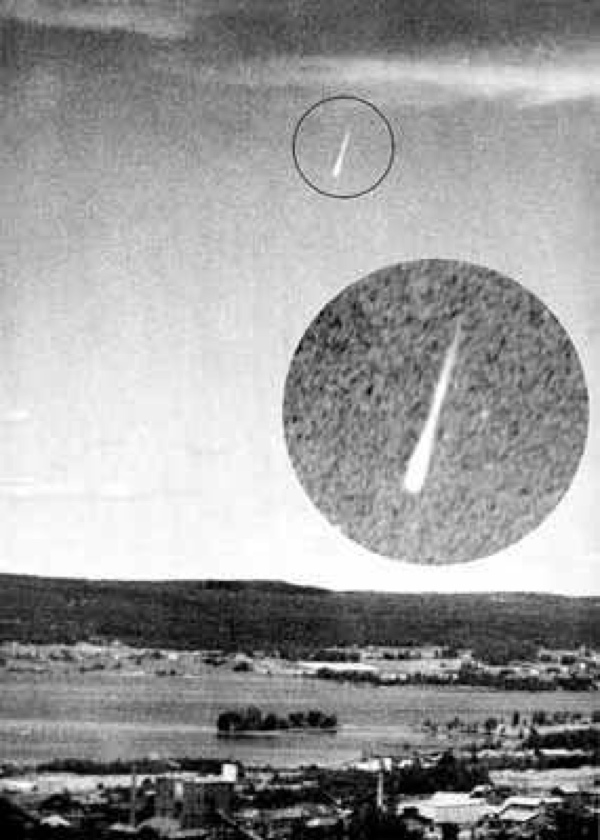
Flying saucers, meteorites, experimental military craft, bombs … no one knows for certain, but there’s no doubt the skies over northern European countries like Sweden, Denmark, Norway, and Finland were invaded by unidentifiable fiery objects in 1946.
The collective sightings known as the Scandinavian ghost rockets likely began in February in Sweden. Further reports began to come in regarding spool or cigar shaped lights in the sky. In June in Finland, witnesses saw a blazing light leave a smoky trail in the air. At first, the light was assumed to be a meteor, until a second such object made a U-turn in mid-air and flew back the way it had come. The lights were seen to dive, roll, and perform other aerial acrobatics. They were mainly described in hundreds of reports as having long flaming tails, made little sound, and traveled at great heights and at speeds of 400+ mph.
In August, a Swedish Air Force pilot spotted a torpedo-shaped object—he declared he could see no aircraft features—about a kilometer away. He pursued the clearly visible “rocket” but it maintained such high speed his bomber couldn’t keep up.
The Swedish government took the sightings seriously and created an investigative committee. Speculation by the committee members involved possible captured German weapons or guided missiles sent over the country’s border by the Soviets as an intimidation tactic. The American and British governments showed an interest, but the theory was later proved incorrect. Sightings tapered off from their 1946 high, but continued for years.
What were the so-called ghost rockets? The Swedish government never found any hard evidence to support a theory of UFOs or Russian missiles. Eventually, the committee’s findings put the majority of the incidents down to imagination and meteorites. A definitive answer has continued to elude those seeking the truth.
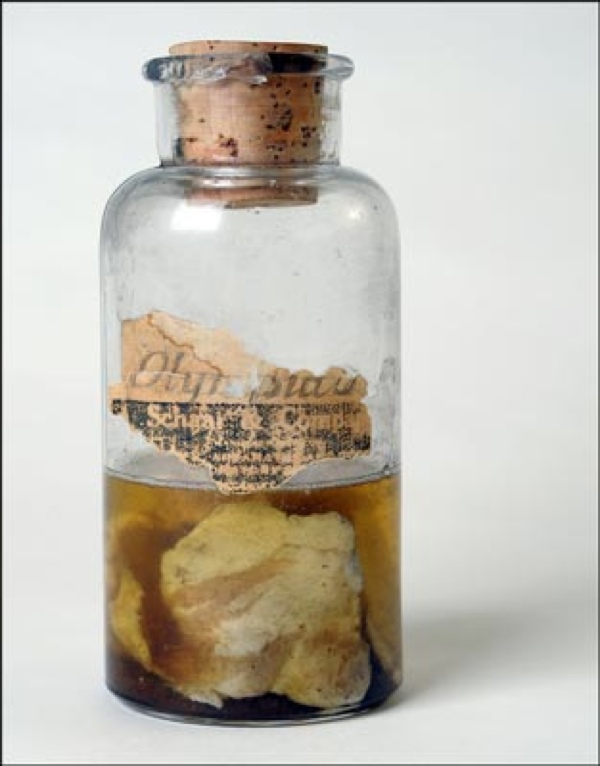
On March 3, 1876, near Olympian Springs in Bath County, Kentucky, Mrs. Allen Crouch was amazed when her outdoor soap making was interrupted by a sudden shower occurring close to the home she shared with her husband. Not rain, as one might suppose. This shower consisted of fresh, edible meat.
The flakes of what appeared to be boneless raw meat fell from a clear, cloudless, windless sky over an area about 100 yards long (the length of a football field) and fifty yards wide. The pieces on the ground and stuck to the fence ranged in appearance from a “delicate shred as light as a snowflake” to a 3” lump of solid flesh. Mrs. Crouch was mystified. According to some accounts, the Crouch’s cat certainly entertained no doubts as it gorged itself on the mystery substance and presumably came to no harm. At least one witness visited the home the next day and saw the meat covered area.
Two unidentified Kentucky gentlemen (the implicating being men of wealth and standing) tasted the meat and believed it either venison or mutton. By July, samples of the meat began to excite members of the scientific community. Controversy raged as to the shower’s origin and whether the pieces were meat or something else. The hypothetical “something else” included pwdre ser or star jelly—a gelatin believed to fall to Earth during meteor showers, nostock—a gelatinous matter sometimes found in sandy areas after a rainfall, lung tissue from a human baby or a horse, and muscle tissue and cartilage which could belong to many species (human wasn’t ruled out). In the New York Times, journalist William Livingston Alden put for the theory of “cosmic meat” floating in belts around the world.
Area locals came to their own conclusion: they believed the meat—probably from a dead horse—had been vomited by a large flock of buzzards passing overhead.
The true cause of the rain of meat that perplexed Mrs. Crouch and delighted her cat remains a mystery.

In the late 19th century, Mr. Hensleigh Wedgwood, an amateur psychical researcher, worked with a spiritual medium identified only as Mrs. R., who used a planchette—an early form of the famous Ouija board—to communicate with spirits. He took extensive notes of these sessions, and usually requested the spirits provide evidence of their existence.
Just prior to Wedgwood’s death in June 1891, he sent a batch of notes to his friend, Frederic William Henry Myers, a member of the British Society for Psychical Research. These notes contained details of planchette sessions Wedgwood and Mrs. R. had conducted on March 22-23 of that year.
According to Wedgwood, he and Mrs. R. had made contact with a spirit named Alice Grimbold, a maidservant who had been condemned in 1605 as an accomplice in a robbery and murder, and sentenced to burn at the stake. Alice revealed she’d been the lover of a man named Harrison, who had promised to marry her if she helped him rob her employer, Mrs. Clarke, who ran an inn called the Blue Boar in Leicester. But Harrison burned the inn, killing the old lady, and Alice was caught and eventually executed.
Wedgwood sought confirmation of the facts by researching old books. He found an account of the Blue Boar murder and the execution of Alice Grimbold in the History of Leicester, a rare volume in the British Museum. He found further proof of the story’s veracity in a 1653 volume, also rare. He maintained that neither he nor Mrs. R. had access to these obscure books, and he did not have a reputation as a man who cheated.
Some believe the spirit of Alice Grimbold reached out from beyond the grave to confess her guilt. Others think either Wedgwood or Mrs. R., acquired the knowledge in a moment of clairvoyance. A solution to the mystery has never been discovered.

Around 1890, surreal events began taking place in Japan, mainly in the area of Kamakura, Yamanouchi Ken. While scientists at the time attempted to explain the phenomenon, local villagers were convinced the cause was due to an invisible monster.
Men walking in fields, at home, or in the open would suddenly feel a strong wind and be knocked over. When they stood, the victims found wounds in their legs. The injuries were narrow slits approximately 1”-1½” long and about an inch deep, and had no apparent cause. At first painless and bloodless, after about a half hour the wounds began to bleed and the pain intensified. It was also reported that the injuries were very difficult to heal.
Scientists studying the events theorized the men’s wounds were caused by an inexplicable loss of atmospheric pressure creating a temporary vacuum. However, the stricken men and other locals believed the wounds were the work of a legendary y?kai called kamaitachi, or the “sickle weasel”—a supernatural creature with sharp, sickle-like claws who traveled in a whirlwind (sometimes described as traveling in trios) and attacked humans so quickly, they couldn’t be detected with the naked eye. The kamaitachi was said to use a medicine on the inflicted wounds to temporarily halt bleeding and pain.
The rash of attacks eventually ceased, or at least ceased being reported by newspapers at the time. No absolute explanation has ever been put forward.

The Stockport, Manchester (England) mother’s ordeal began in 1980. Following an argument with her first husband, Ron, Jacqueline shouted, “I hope you break your neck!” Unfortunately, that’s exactly what happened. After Ron sped away from the house on his scooter, he was involved in an accident resulting in spine and neck fractures. After a month in the hospital, he died, leaving Jacqueline devastated by guilt.
Not long afterward, a lightbulb in Jacqueline’s bathroom exploded. Her arm was cut by flying glass. She put the cause down to a faulty bulb. When her vacuum cleaner kept burning out—a repairman could find no cause—and another lightbulb exploded, she became convinced her home was haunted by the ghost of her dead husband.
Moving house didn’t help. Electrical appliances continued to go haywire in her presence. The stove and vacuum cleaners she bought kept burning out. The television changed channels on its own or the picture distorted. The radio switched channels without being touched too. She also received and delivered severe electrical shocks. Some grocery stores and appliance shops attempted to ban her. After she married her second husband, an electrician, the strange and frightening phenomena continued to occur.
The depressed woman, who suffered headaches and fainting spells, contemplated suicide. Psychic mediums and investigators failed to find a cause. Once, a visiting reporter accused Jacqueline of fraud, making her so angry, the vacuum cleaner burst into flames.
At last, a visiting professor provided the key to Jacqueline’s dilemma: both he and her second husband, Paul, believed she suffered from an extreme build-up of static electricity—more than 10 times the normal amount—in her body. By sticking to a special diet and daily program which included walking around the house holding onions to discharge the surplus electricity, Jacqueline’s problem gradually diminished. However, in 1985, her fourth child (a daughter) was born and immediately began exhibiting signs of taking after her mother by giving the midwife a static shock.
What was the cause of Jacqueline’s condition, sometimes called High Voltage Syndrome? Why did her symptoms begin after the death of her first husband? The answers to these questions will probably never be known for sure.







